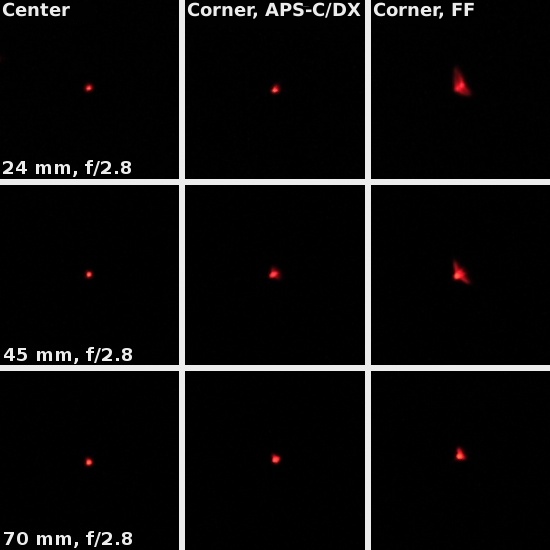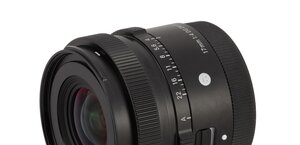Sigma 24-70 mm f/2.8 EX DG HSM
7. Coma and astigmatism
Please Support UsIf you enjoy our reviews and articles, and you want us to continue our work please, support our website by donating through PayPal. The funds are going to be used for paying our editorial team, renting servers, and equipping our testing studio; only that way we will be able to continue providing you interesting content for free. |
- - - - - - - - - - - - - - - - - - - - - - - - - - - - - - - - - - - - - - - - - - - - - - - -
The Sigma corrects coma in the DX detector corner very well. Although the influence of this aberration is perceivable, it’s level is not significantly high and the tested lens performs here similarly to its competitors. The results for the full frame corner are significantly worse, though. Coma clearly deforms the image of the diode and has a negative effect on the frame corner picture quality. In fact, the acceptable level is reached only at the maximum aperture. At the range from 24 to 45 mm, the coma level is high.

The way the Sigma correct the astigmatism is truly something to be admired. It doesn’t matter whether we use a D3x or a D200 camera, the level of this aberration is insignificantly low. On full frame, the average difference between the vertical and horizontal values of the MTF50 function is 4.0% and in the case of the Nikon D200 – only 2.7%. A standing ovation!.






